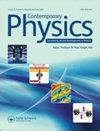柔性超级电容器:材料和应用
IF 3.3
4区 物理与天体物理
Q2 PHYSICS, MULTIDISCIPLINARY
引用次数: 0
摘要
在他的专著中,Pokrovskii介绍了热力学和用于处理它们的方法,然后将相同的方法和哲学扩展到许多化学,生物和社会结构。首先,对于那些以前不太熟悉的人,在进行平衡和非平衡状态的分类之前,在密集的介绍性章节中,给出了基本热力学的可访问的阐述。在关注系统内部变量的概念之后,波克罗夫斯基的贡献澄清了系统的几个微观状态与其整体状态和平衡的关系,展示了统计力学的力量。要理解熵,需要从不同的角度进行一些考虑,因此这里对熵的处理是有益的。除了概念的严格定义外,它还有助于进一步扩展它的直观表示。然后,语气从纯粹的严谨转变为更具创造性的,并说明了所讨论的基本原则的各种应用,并广泛引用了有关该主题的几部作品,包括作者自己的作品。用统计力学方法对微观尺度现象进行平均来研究全局演化的一个标准实例是众所周知的流体动力学方程组,这是有用的推导。在熵、复杂性和信息的基础上,阐述了复杂性是如何产生的,通过强加和产生秩序,比如在制造业,以及通过生物进化。最后,对于那些关心数学生物学的人来说,本书展示了与种群动力学的深刻联系,将热力学思想应用于最好奇的生物——人类。在转向人类学结构的过程中,个人都是对全球系统做出贡献的代理人,波克罗夫斯基将热力学概念以一种新颖而富有想象力的方式延伸到社会和经济互动中,试图用同样的思维模式解释马克思和韦伯的理论,尽管完整的形式主义不能完全延续到这些领域。对于后来的本科生和研究人员在物理科学,谁是知识渊博和感兴趣的热力学,并在一个复杂的系统通过其微观组成元素的相互作用的相关描述,这本书提供了很好的指导。为了从数学处理中获得最大的收获,读者可以从张量微积分的知识中受益。对于那些感兴趣的和更高级的读者,脚注提供了一个更复杂的思想的指南,比如微物理学的各个方面。虽然结构良好,但一些排版错误会影响文本。在书的某些部分,一些翻译问题和英语的不完善会损害可读性。结合符号表和术语表也可以增强表示。本文章由计算机程序翻译,如有差异,请以英文原文为准。
Flexible supercapacitors: materials and applications
In his monograph, Pokrovskii gives an introduction to thermodynamics and the methods used to treat them, before extending the same approach and philosophy to a number of chemical, biological, and social structures. First, an accessible exposition of rudimentary thermodynamics is given, for those previously less acquainted with them, before proceeding to categorise equilibrium and nonequilibrium states, in dense introductory chapters. Following attention to the concept of the internal variables of a system, Pokrovskii’s contribution clarifies the relation of the several microstates of a system to its global state and equilibrium, demonstrating the power of statisticalmechanics. Entropy, to be understood, requires some consideration, from different perspectives, and thus the treatment that it receives here is beneficial. Alongside the rigorous definition of the concept, it would help to have further expansion upon the intuitive representations of it. Then, the tone shifts from a purely rigorous to a more creative one, and the multifarious applications of the fundamental principles discussed are illustrated, with extensive referencing of several works on the topics, including the author’s own. One standard instance of the statistical mechanical method of averaging over micro-scale phenomena to study global evolution is the well-known set of equations of fluid dynamics, which are usefully derived. Building upon ideas of entropy, complexity, and information, the exposition then turns to how complexity is produced, through the imposition and production of order, such as in manufacturing, and via biological evolution. Towards the end, an insightful link with population dynamics is shown, for those concerned with mathematical biology, leading into an application of thermodynamic ideas to that most curious of creatures, man. In turning towards anthropological structures, in which individuals are all agents contributing to the global system, Pokrovskii stretches thermodynamic concepts to apply to social and economic interactions in a novel and imaginative way, seeking to explain theories of Marx and Weber with the same mode of thinking, although the full formalism cannot be fully carried over to these. For later undergraduate students and researchers in the physical sciences, who are knowledgeable of and interested in thermodynamics, and in the associated description of a complex system through the interaction of its microscopic constituent elements, the book offers good instruction. In order to gain most from the mathematical treatment, readers benefit from knowledge of tensor calculus. For those interested and for more advanced readers, the footnotes provide a guide to more complex ideas, such as aspects of microphysics. Although well structured, some typographical errors affect the text. In parts of the book, some issues of translation and imperfections in the English can impair the readability. Incorporating a table of symbols and a glossary could also enhance the presentation.
求助全文
通过发布文献求助,成功后即可免费获取论文全文。
去求助
来源期刊

Contemporary Physics
物理-物理:综合
CiteScore
2.90
自引率
5.00%
发文量
18
审稿时长
>12 weeks
期刊介绍:
Contemporary Physics presents authoritative and lucid introductory review articles on important recent developments in physics. The articles are specially commissioned from experts in their field. The authors aim to review comprehensively the current state of their subject and place it within a broader context of contemporary research, industrial possibilities and applications in an accessible way.
The Journal is of particular use to undergraduates, teachers and lecturers and those starting postgraduate studies who wish to be introduced to a new area. Readers should be able to understand the review without reference to other material, although authors provide a full set of references so that those who wish to explore further can do so. The reviews can also be profitably read by all those who wish to keep abreast of the fields outside their own, or who need an accessible introduction to a new area.
Articles are written for a wide range of readers, whether they be physicists, physical scientists or engineers employed in higher education, teaching, industry or government.
Contemporary Physics also contains a major section devoted to standard book reviews and essay reviews which review books in the context of the general aspects of a field.
 求助内容:
求助内容: 应助结果提醒方式:
应助结果提醒方式:


